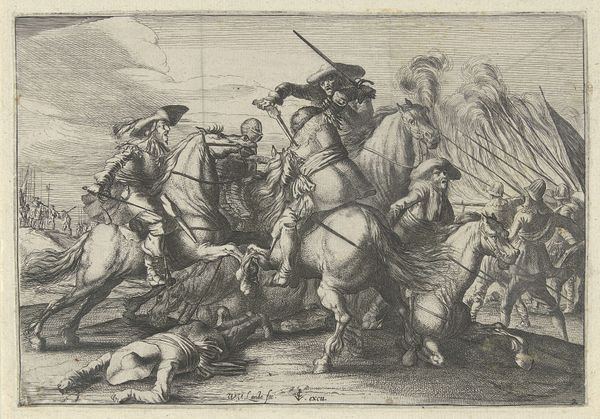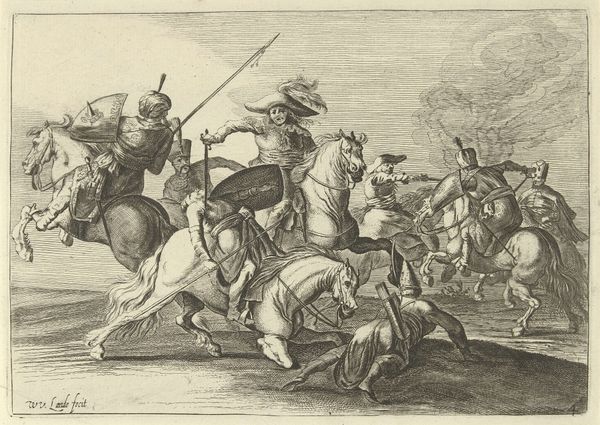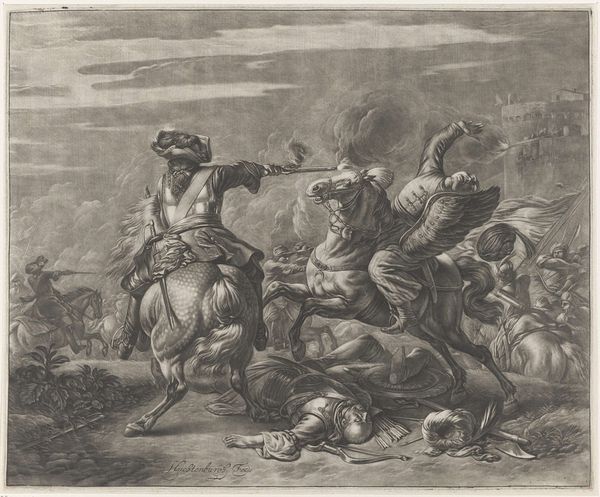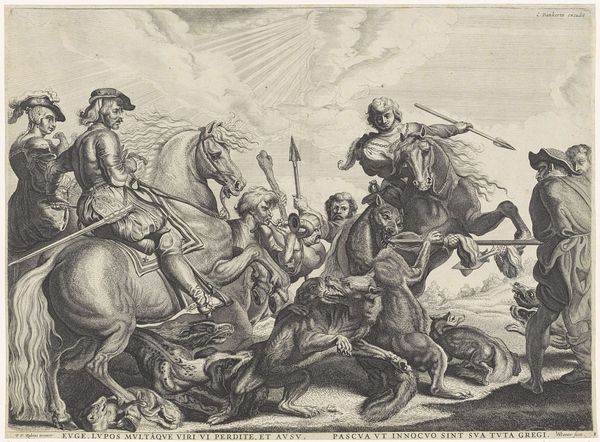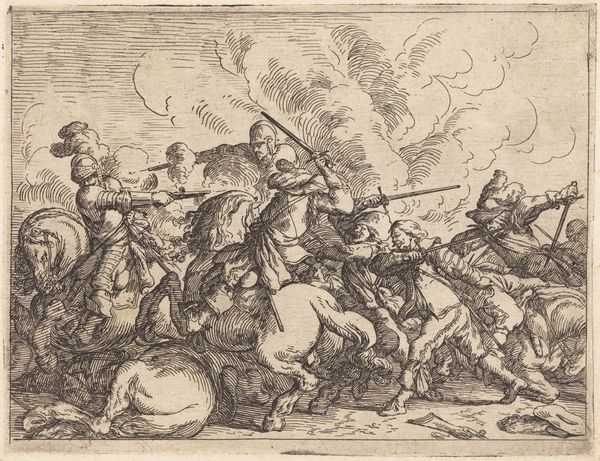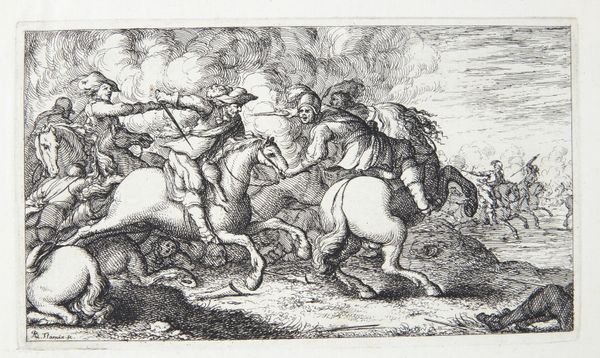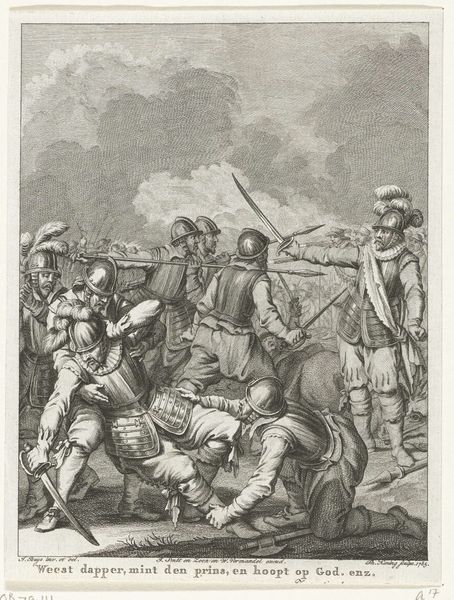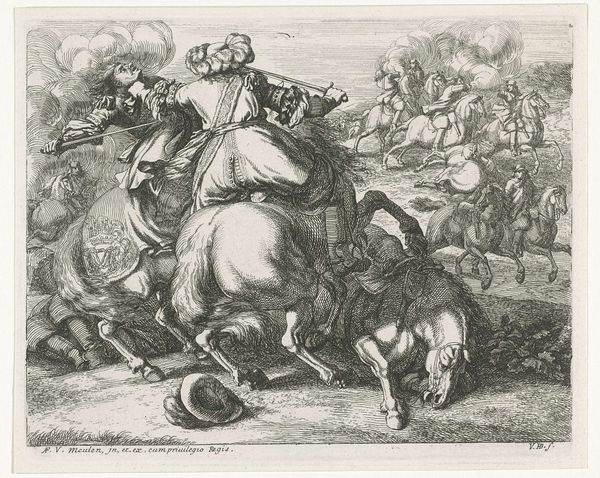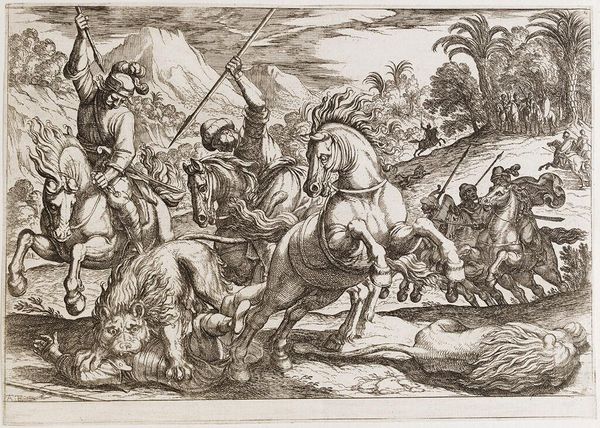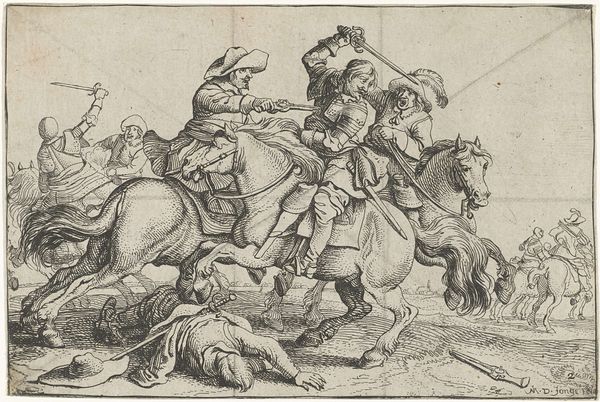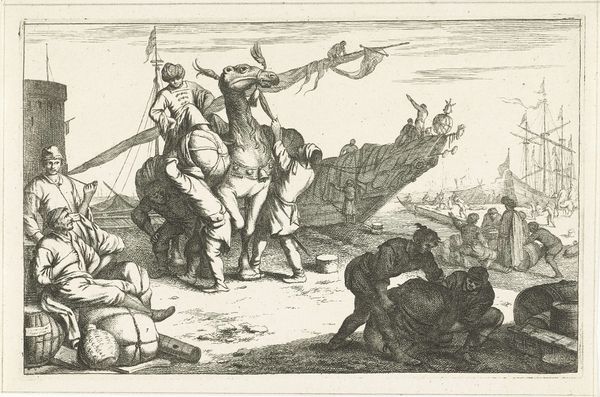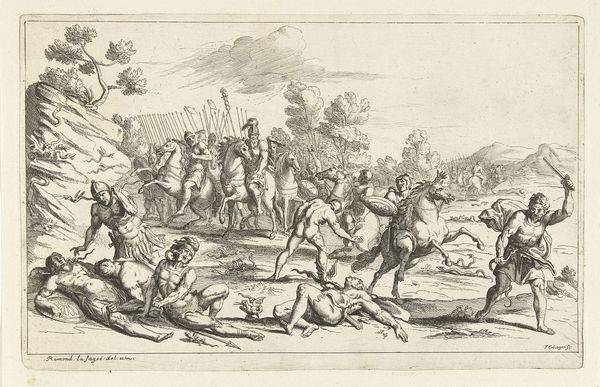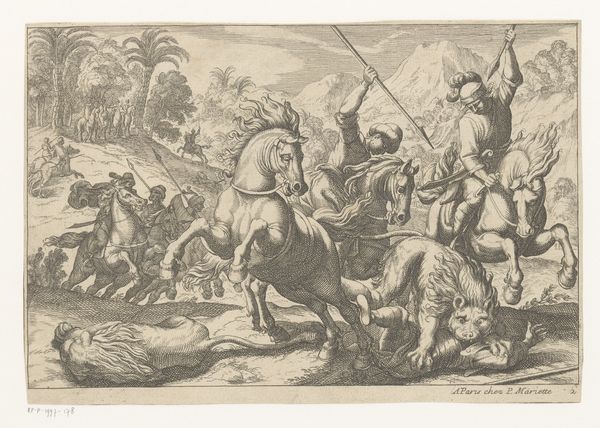
print, engraving
#
narrative-art
#
baroque
# print
#
figuration
#
line
#
history-painting
#
engraving
Dimensions: height 140 mm, width 204 mm
Copyright: Rijks Museum: Open Domain
Editor: Here we have "Vijf ruiters in gevecht" by Willem van Lande, an engraving print that could have been made anytime between 1635 and 1751. The scene feels so dynamic and violent. What's your interpretation of the work? Curator: The chaos indeed mirrors the times. What strikes me is not just the depicted violence, but who is telling this story? The artist renders this history painting through a very specific lens, most likely aligned with the ruling classes. Consider the history being presented; Whose voices are excluded from this narrative of combat and power? Editor: That’s a good point! The focus is clearly on the drama of the battle itself, not really the individual cost or the broader social implications. Curator: Exactly! Engravings like these often served as propaganda, reinforcing dominant ideologies. We should examine not just the "what" but the "why." How does this portrayal of conflict normalize or even glorify violence, and what purpose did that serve within the societal power dynamics of the time? Look at the clean lines of the engraving—it’s not necessarily about realism. Editor: So, you're saying it's less about historical accuracy and more about solidifying certain perspectives on power and conflict. Curator: Precisely. Who benefits from this image? How does it contribute to the era's social constructs and political narratives? Those are the questions we should ask when confronting art that presents historical narratives. Editor: I never thought about approaching historical art in that way. It changes my perspective completely. Thanks! Curator: It’s about seeing art as a reflection of – and an active participant in – its socio-political environment. It’s never just about aesthetics or technique; it’s about power and representation.
Comments
No comments
Be the first to comment and join the conversation on the ultimate creative platform.
